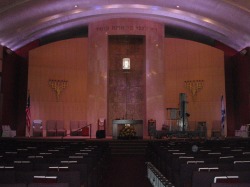Title.
We are having a traditional Jewish wedding including a Bedeken and Tish
The bedeken, which translates as "veiling," is the groom's veiling of his bride immediately before the ceremony. The custom is said to be based upon the Biblical story in which Jacob, intending to marry Rachel, accidentally marries her older sister Leah, who wore a veil. In addition to having the groom verify that he is marrying the right woman, the bedeken is often preceded by singing and dancing around the bride, who sits on a thronelike chair. Traditionally, the men gather around the groom for the tish, or groom's "table." At the tish, the nervous groom traditionally attempts to deliver some words about the Torah portion while his friends and family take the pressure off by constantly interrupting him with jokes, toasts, singing, and dancing. At the end of the tish, family and friends carry the groom into the bedeken for veiling and continue singing and dancing around the bride. Even if there are aspects of these customs that seem to be based on anachronistic values, such as the separation of men and women and the contrast of the bride sitting to be admired for her beauty, while the groom tries to teach, we recommend thinking about ways to incorporate these traditions that are comfortable and consistent with your values. They offer a way to start the celebration early and to get everyone in the right, festive frame of mind. If the gender separation is not something you feel comfortable with, the two ceremonies can be combined in one place. We've also known brides who tried to teach something, an update we especially like. Finally, even if you don't want to have a public bedeken, some couples do the veiling in a more private location, such as the rabbi's study at the synagogue.
The bedeken, which translates as "veiling," is the groom's veiling of his bride immediately before the ceremony. The custom is said to be based upon the Biblical story in which Jacob, intending to marry Rachel, accidentally marries her older sister Leah, who wore a veil. In addition to having the groom verify that he is marrying the right woman, the bedeken is often preceded by singing and dancing around the bride, who sits on a thronelike chair. Traditionally, the men gather around the groom for the tish, or groom's "table." At the tish, the nervous groom traditionally attempts to deliver some words about the Torah portion while his friends and family take the pressure off by constantly interrupting him with jokes, toasts, singing, and dancing. At the end of the tish, family and friends carry the groom into the bedeken for veiling and continue singing and dancing around the bride. Even if there are aspects of these customs that seem to be based on anachronistic values, such as the separation of men and women and the contrast of the bride sitting to be admired for her beauty, while the groom tries to teach, we recommend thinking about ways to incorporate these traditions that are comfortable and consistent with your values. They offer a way to start the celebration early and to get everyone in the right, festive frame of mind. If the gender separation is not something you feel comfortable with, the two ceremonies can be combined in one place. We've also known brides who tried to teach something, an update we especially like. Finally, even if you don't want to have a public bedeken, some couples do the veiling in a more private location, such as the rabbi's study at the synagogue.


